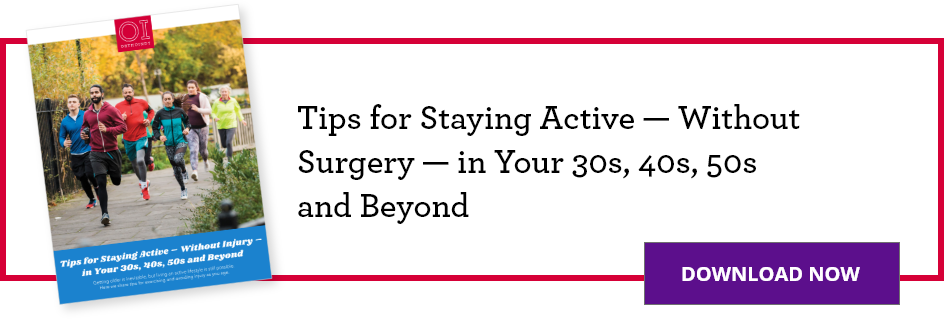THIS POST IS PART OF THE ULTIMATE GUIDE TO HAND, WRIST AND ELBOW INJURIES
A stress fracture is an overuse injury and a relatively common sports injury.
Anatomy
Most stress fractures happen in the weight bearing bones of the lower leg and foot: tibia, femur and metatarsals. They can occur when muscles become tired and are unable to absorb added shock. Over time, the tired muscle transfers the overload of stress to the bone causing a tiny crack. They can also occur because of improper bone nutrition, such as lack of calcium and vitamin D.
What causes a stress fracture?
- Level of activity increased too rapidly
- Using improper equipment when exercising
- Increasing physical demands on your body
- Not resting between exercises
- Overuse
Pain with activity that lessens with rest is the most common symptom of a stress fracture.
How is a stress fracture diagnosed?
Your physician will ask you for a complete medical history, have you describe your symptoms and how the injury occurred, and conduct a physical examination. An X-ray, MRI or bone scan may be necessary to confirm the diagnosis or rule out other problems.
OrthoIndy is proud to be the official orthopedic provider of the Indiana Pacers. Make an appointment with an orthopedic specialist.
How is a stress fracture treated?
Nonsurgical treatment
Rest from the activity that caused the fracture is the most important treatment. Most injuries will heal in six to eight weeks. However, if the activity that caused the stress fracture is resumed too soon, larger fractures can develop, which can lead to chronic problems where the injury might never heal properly. Shoe inserts or braces may also help during the healing process.
Surgical treatment
Surgery may be necessary if the bone has become so weak that there is a chance a displaced fracture (bones breaking into separate pieces) could occur.
How do you prevent a stress fracture?
- Set incremental goals and gradually build up resistance
- Alternate activities instead of performing the same exercise everyday
- Maintain a healthy diet
- Use proper equipment
- If pain or swelling occurs, immediately stop the activity and rest for a few days
Learn more about sports medicine treatment at OrthoIndy.

Schedule an appointment
Your well-being is important to us. Click the button below or call us to schedule an appointment with one of our orthopedic specialists. If your injury or condition is recent, you can walk right into one of our OrthoIndy Urgent Care locations for immediate care. For rehabilitation and physical therapy, no referral is needed to see one of our physical therapists.





